STEPS
TOOLS
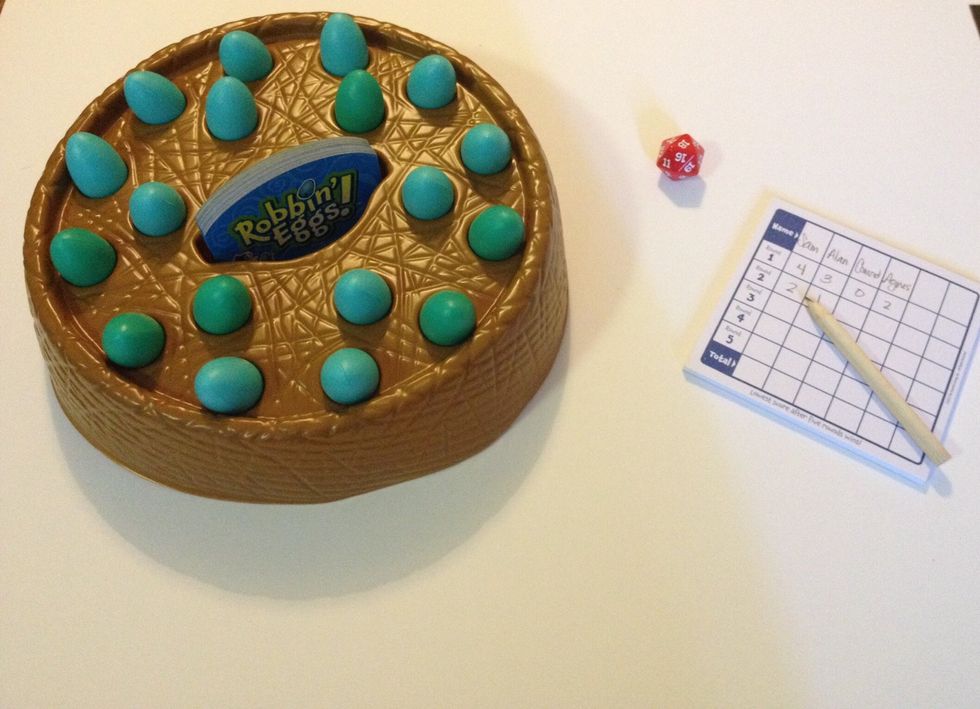
Robbin' Eggs is a fantastic game, but some learners may not be able to play it as designed when first introduced to it. Here are the steps I use to shape gameplay for Robbin' Eggs.
My basic rule of thumb when shaping gameplay is that a learner must be able to independently play the game at the current step for three consecutive turns before adding in the next step.

Introduce only the blue eggs. Roll the 20-sided die and have the learner choose 2 or more eggs to reach the sum.
If your learner struggles to read the correct number on the 20-sided die, you may want to use a die with fewer sides. You can also use number cards that the learner turns over to find a target number.
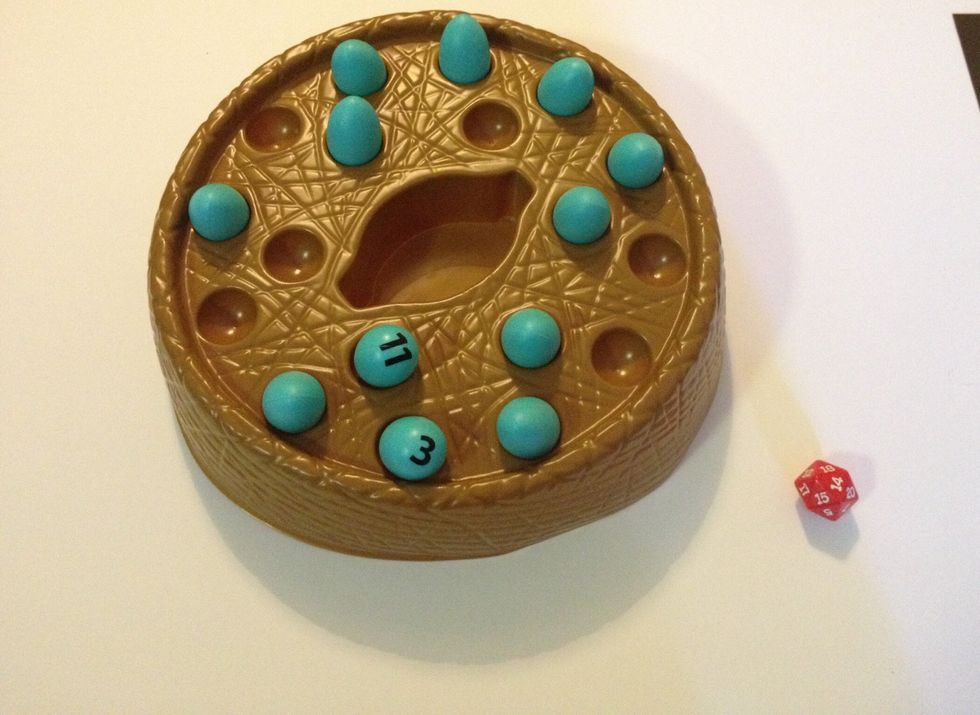
Be sure to teach the learner to leave the egg in the nest with the number side up for the duration of their turn (instead of removing it from the nest.)

Add the green eggs to the game. Practice reaching the target number by adding and/or subtracting.
You may want to limit the learner to turning over 2 eggs per turn, but remind them to pay attention to other players' turns so they can better select eggs to reach future target numbers.
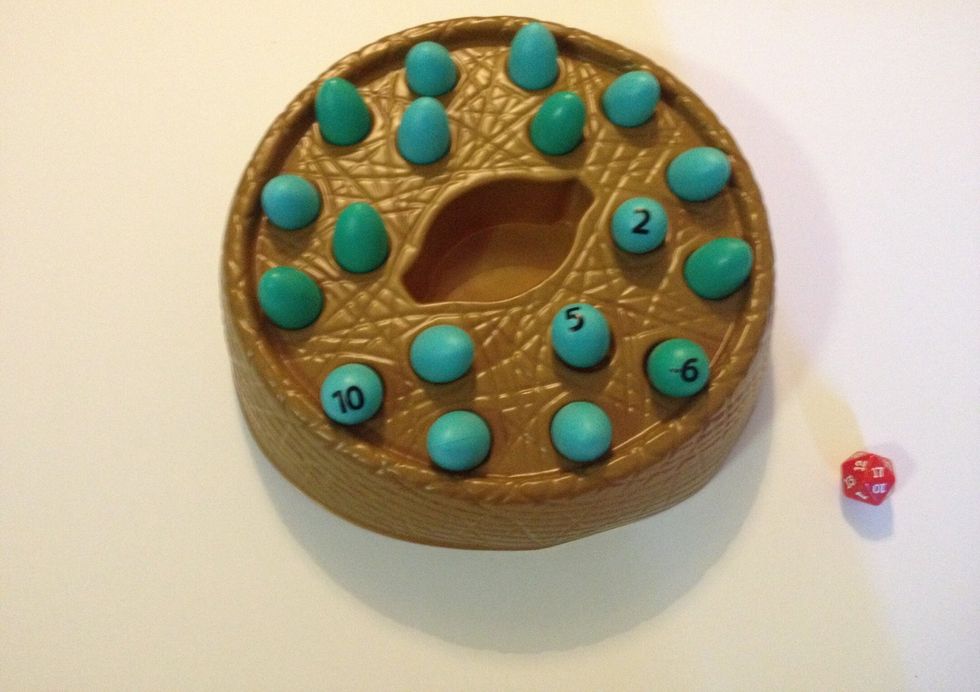
Depending on the skill level of the learners, you may want to allow for more free exploration of the game, letting the learners turn over as many eggs as they wish to reach the target number.
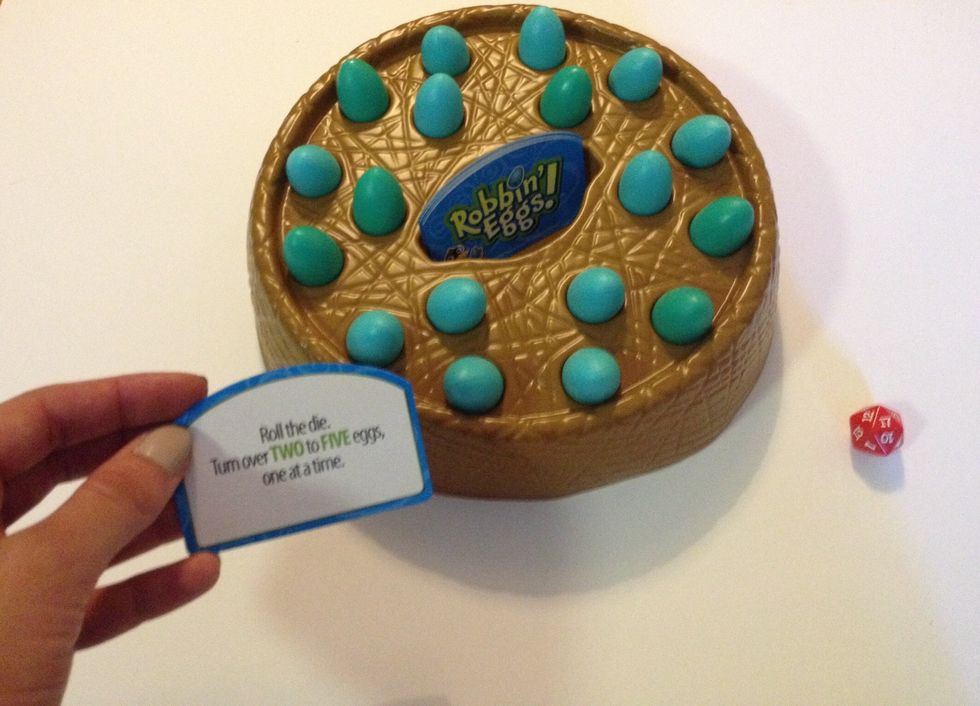
After your student has mastered using both green and blue eggs, add in the cards. (Do not yet include the Rob cards or the Scrambled Egg cards.)
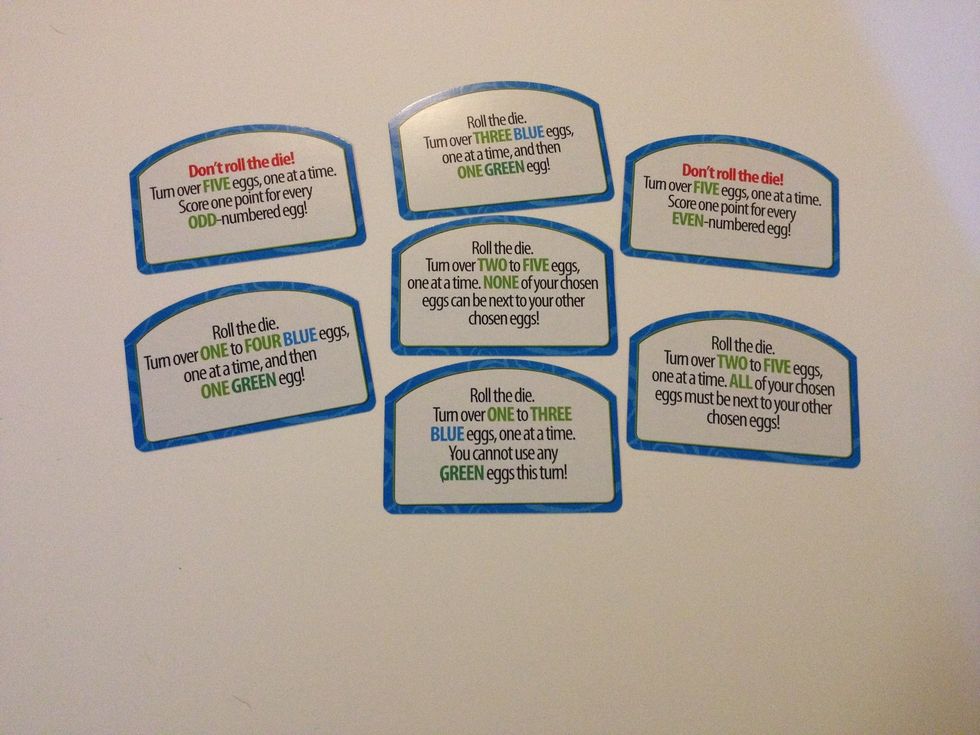
For some learners, you may want to remove the more challenging cards, such as those pictured above.
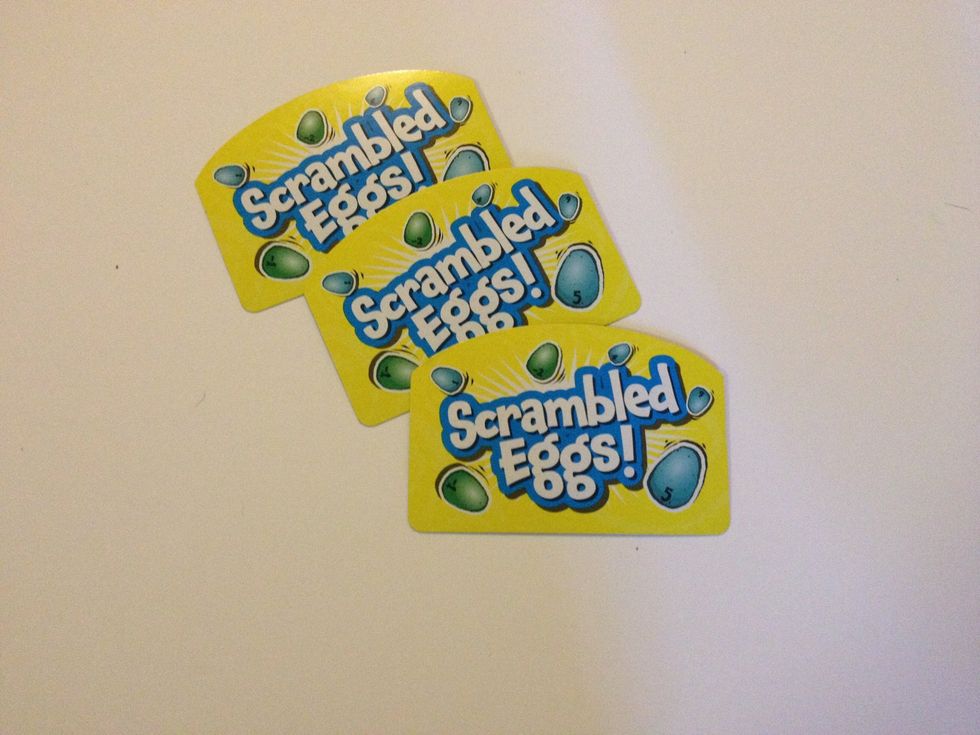
Introduce the Scrambled Eggs cards. Explain that if you draw this card, you get to move around eggs in the nest. This may challenge flexibility skills in learners with autism or other delays.

Introduce Rob cards. Explain that if you draw this card you score zero for the round, then can rob another player's eggs during their turn.
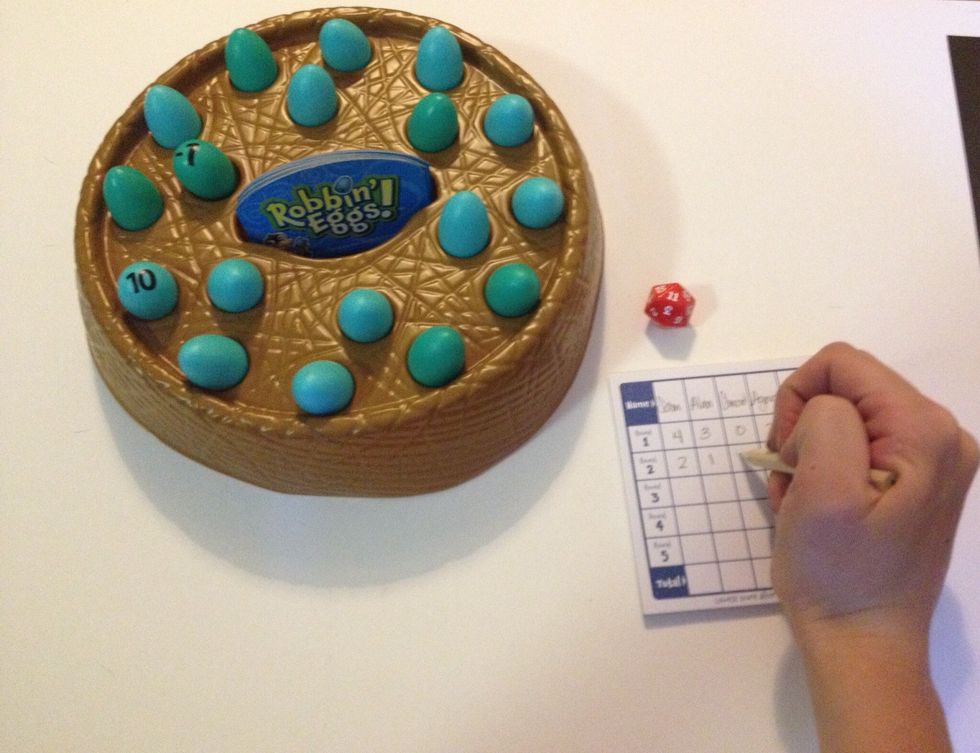
Introduce the score card. This strengthens practice of math skills, but may cause some learners to lose motivation in the game, especially if it slows down the speed of play.
Remember that making modifications to a game does not decrease the value of the game. The ultimate goal is to create opportunities for learners to engage in play with peers and siblings.
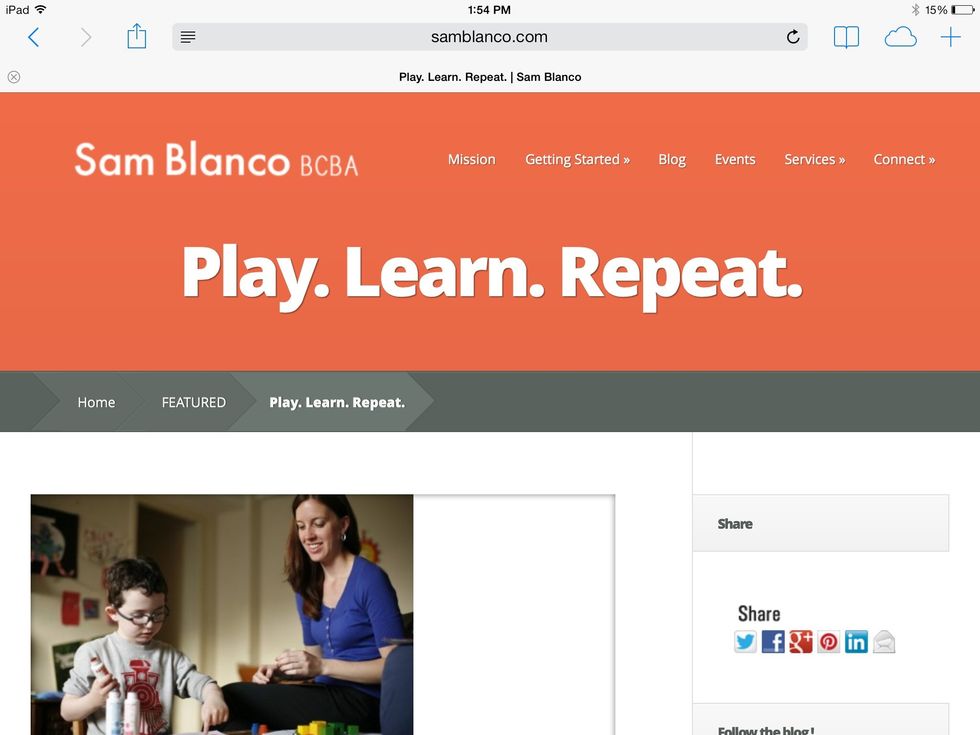
For more information on modifying games for learners with autism and other developmental delays, visit www.samblanco.com.
The creator of this guide has not included tools
Sam Blanco
Special education teacher, Board Certified Behavior Analyst. Dedicated to showing the value of games, play, and technology in special education.
Brooklyn, NY
The Conversation (0)
Sign Up